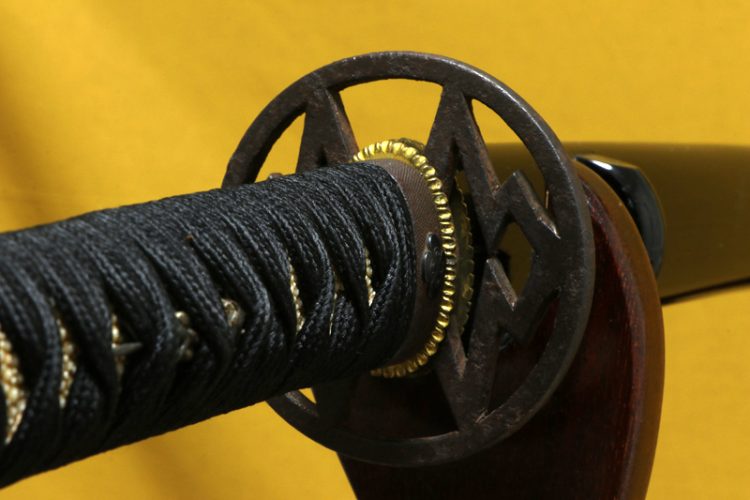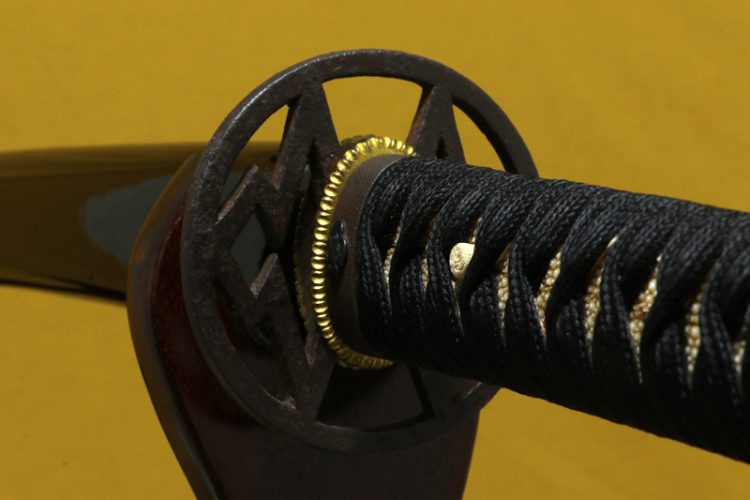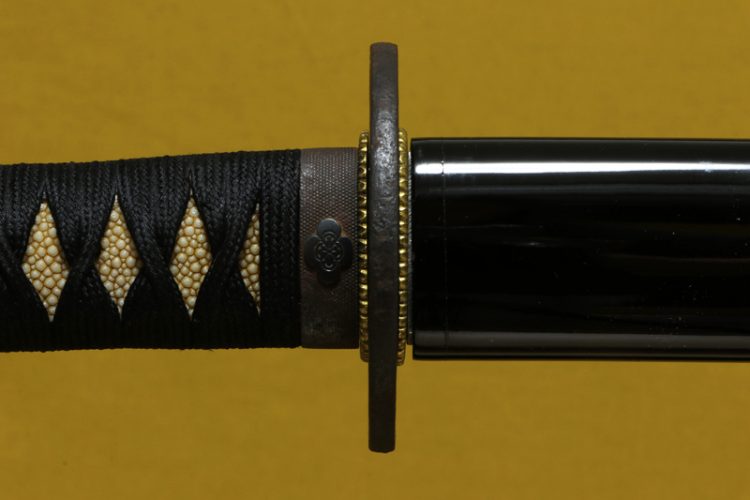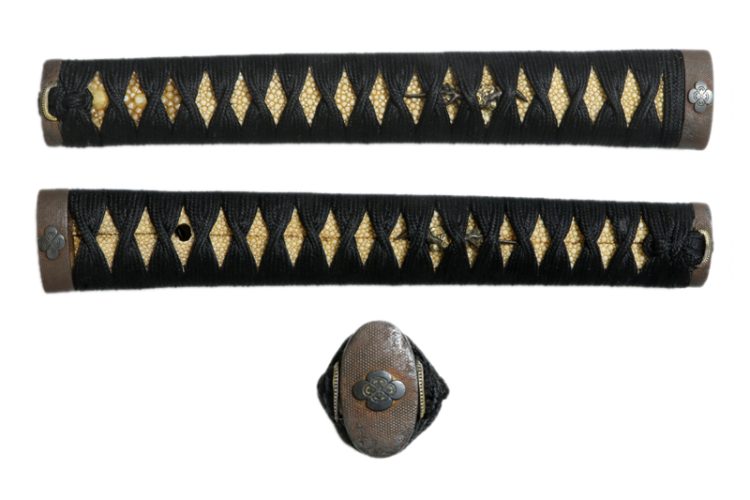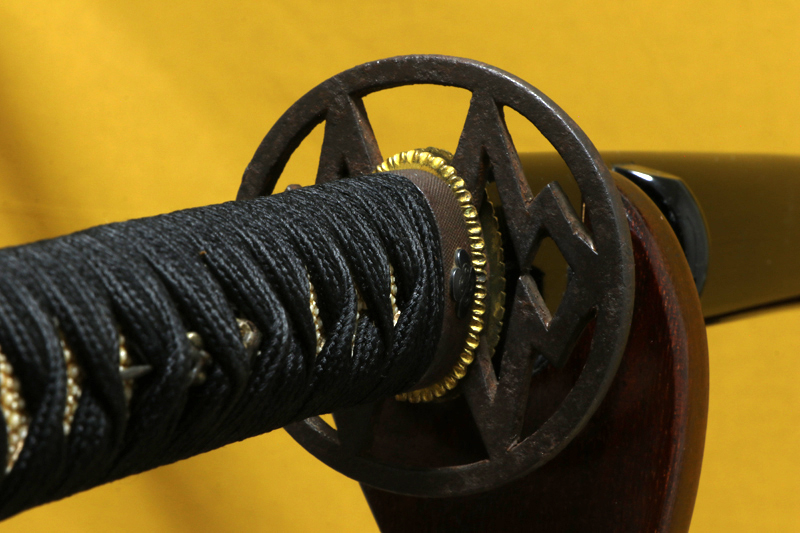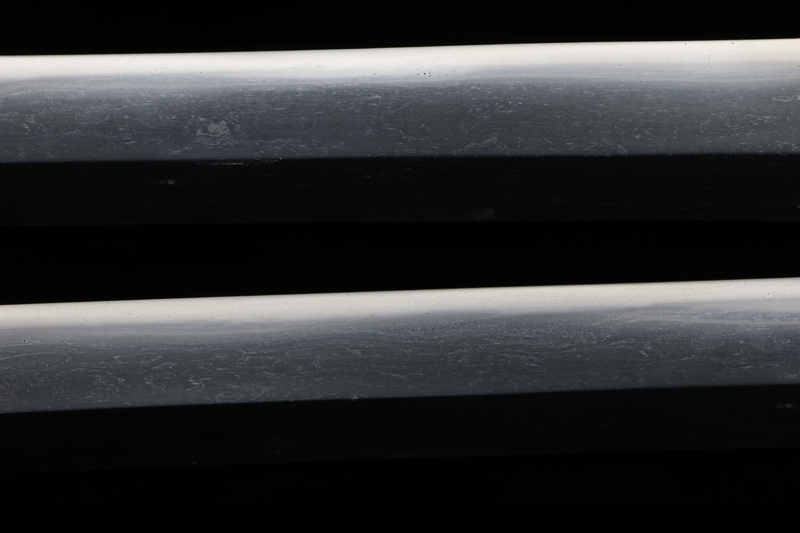説明
「刀姿 sword figure」
鎬造り庵棟、身幅太く重厚く、鳥居反りで中鋒。茎は2.5cmほど区が送られ鑢目は筋違い、茎尻は栗尻。
「地鉄 jigane」
地鉄は板目肌が流れ柾と成り肌立、地沸が付く。
「刃紋 hamon」
刃紋は沸出来の直刃で、食い違い刃を見せ、砂流しかかる。刃中は打のけ、金筋が入る、葉入る。帽子は乱れ込み小丸に返る。
「特徴 detailed」
同田貫は九州肥後国菊池の同田貫(地名)を本拠地に、永禄頃から活躍した肥後刀工の一群。延寿派の末流とされる。
肥後同田貫右衛門は、室町時代は永禄から天正、文禄頃の人で、正国、又八らと並ぶ位の有る刀匠です。
同田貫の作刀は豪刀武用刀として知られ、加藤清正の入国後は抱え工となり、また熊本城の常備刀とされ全盛期を迎えるが、加藤家改易後衰亡し、鍛刀技術は途絶える。
その後、幕末に9代正勝が薩州正幸より鍛刀術を習得し、第10代宗広、第11代宗春の時代に「新々刀同田貫」として再び繁栄した。
宗広は通称を寿太郎・延寿太郎といい、肥後の新々刀期(1772年以後)を代表する刀工の一人となる。
本作は元亀・天正頃に作られた刀で、ちょうど織田信長が天下統一への階段を上っていく、戦いの真っ最中の時代です。その時代の同田貫は甲冑の上からも叩き斬れるように、重厚く刃肉をたっぷり付いているのが特徴で、この刀はその特徴が良く残っています。
The Dōtanuki were a group of swordsmiths active in the Higo Province (modern-day Kumamoto Prefecture), centered around the Dōtanuki region, from the Eiroku period (1558–1570) onward. They are considered the descendants of the Enju school of swordsmiths.
Higo Dōtanuki Emon was a notable swordsmith from the Eiroku to the Tenshō and Bunroku eras (16th century) and is considered on par with other esteemed smiths such as Masakuni and Matahachi. Dōtanuki blades are renowned for their robustness and practicality in battle, characterized by their sturdy construction, which allowed them to cut through armor with ease. During the reign of Kato Kiyomasa, the Dōtanuki smiths were employed by the Kato clan and their swords became standard-issue at Kumamoto Castle, marking the peak of their production. However, after the Kato clan’s downfall, the Dōtanuki line declined, and their sword-making techniques were lost.
In the late Edo period, Masakatsu, the 9th generation of the family, revived the Dōtanuki sword-making methods by learning techniques from Sashū Masayuki. The Dōtanuki tradition was carried forward by Masakatsu’s descendants, Munihiro (10th generation) and Muniharu (11th generation), with their work being labeled as “Shinshintō Dōtanuki” (New Dōtanuki). Munihiro, who went by the name Jutarō or Enjutarō, became a representative swordsmith of the Shinshintō period (post-1772).
This particular blade, crafted during the Genki to Tenshō periods (late 16th century), aligns with the era when Oda Nobunaga was actively pursuing his quest for unification. Dōtanuki swords of this time are notable for their thick, heavy blades, designed to cut through armor, and this piece retains those distinct features well.
「拵 Koshirae」
ハバキ(habaki) :素銅地銀着一重の腰祐乗。
鍔(tuba):鉄地二階菱透かし(銘:紀州住 貞命)
縁頭(fuchikashira) : 鉄魚子地木瓜紋の図。
目貫(menuki) :赤銅地梅の図、
柄(tsuka) :鮫は親粒が付き巻鮫、柄巻きは正絹黒色の諸撮み巻き(新品)。
鞘(saya) :黒呂。
「刀剣の状態 condition of blade」
研:古研ぎのため鋒に少し薄錆が有ります。
傷:肌立っていますが、欠点になるような傷は有りません。







